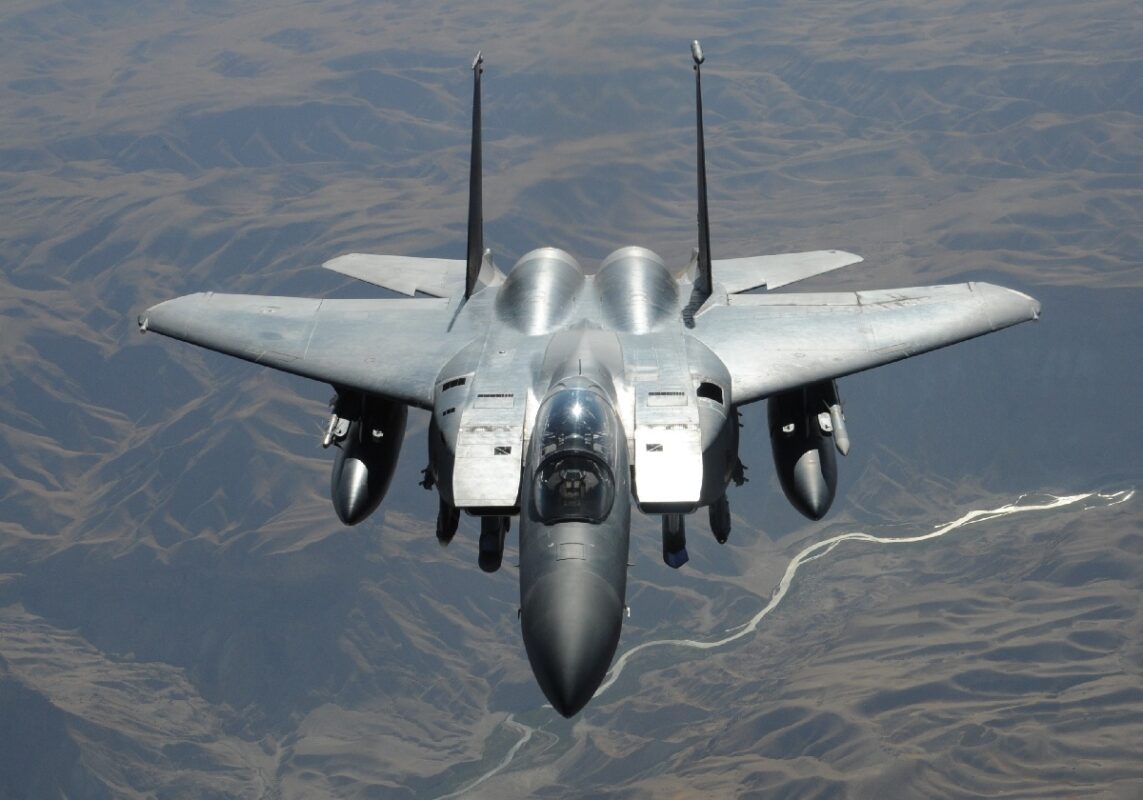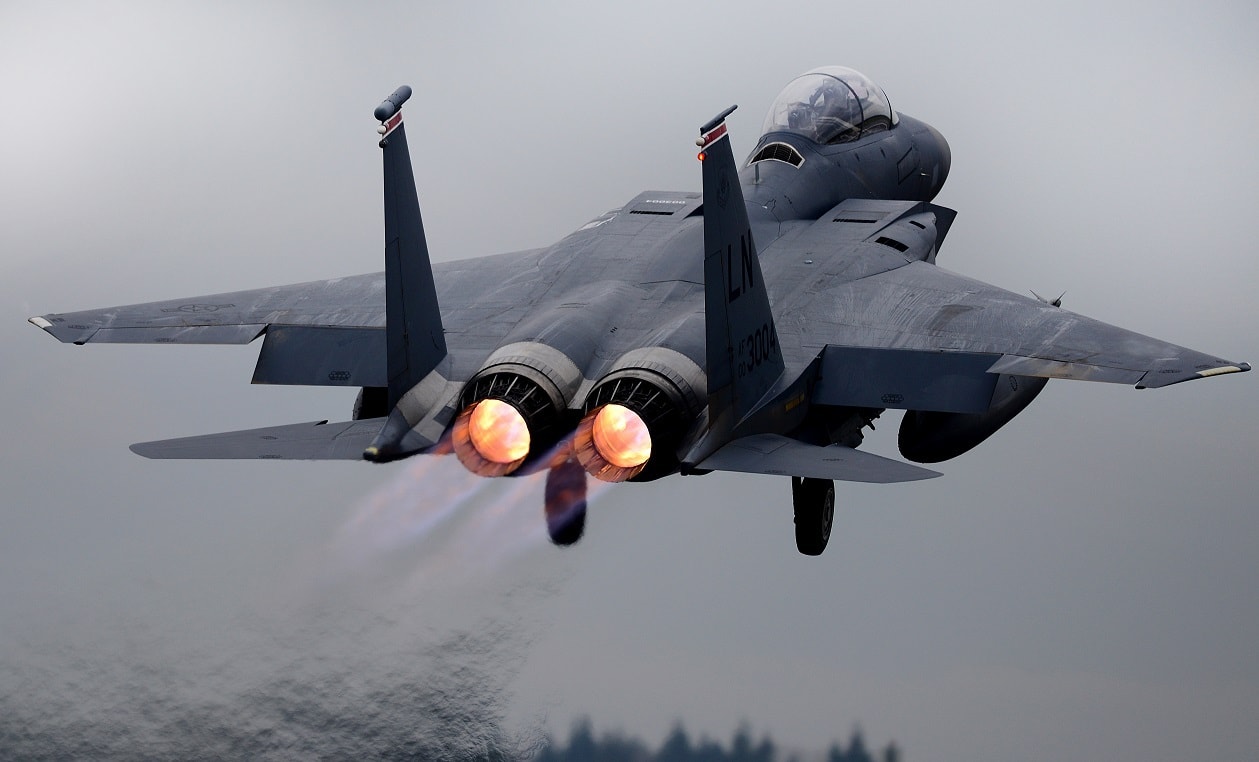The F-15E Strike Eagle, Explained in 3 Minutes: The F-15E Strike Eagle is so popular with warplane enthusiasts that it was once the star attraction of an air simulator video game that sold 1.5 million units in the 1980s. The initial design of the airplane was kicked off in the late 1960s and the U.S. Air Force took its last delivery of the F-15E in 2002. In the 1990s, new variants were exported to Israel and Saudi Arabia. In the 2000s, South Korea and Singapore received F-15 upgraded models. The Saudis later ordered the advanced F-15K/SG in the 2010s and Qatar received the 36 F-15QAs in 2017.
Let’s take a deeper look at the F-15E to see why the airframe has been so omnipresent over the years.
Name the Condition or Mission and the F-15E Won’t Disappoint
The biggest attraction of the F-15E is its versatility. It flies during the day, at night, and in all-weather. It can be an interceptor, it can provide air superiority, it can dogfight, and it can bomb.
The original baseline F-15 got its first kill in 1979 when an Israeli pilot bested a Syrian MiG-21 fighter. Since then, the F-15 has notched over a hundred air-to-air kills, with no losses in aerial combat. During Operation Desert Storm the F-15E shot down Iraqi MiG-29 Fulcrum fighters and Mirage F-1 fighters. This airplane just keeps on ticking today and the U.S. Air Force still has around 224 F-15E Strike Eagles.
Air-to-Air and Air-to-Ground
The F-15E has a pilot and a weapons system officer. This is mainly due to the APG-70 radar system. The APG-70 has a dual role too. The pilot can use the system to engage ground targets while the weapons system officer can look out for air targets. The crew can then swap roles depending on whether there are new air-to-air threats or different targets on the ground.
The Weapons System Officer: I Want That Job
The weapons system officer has a great gig because there is all kinds of action in the back seat. There are four screens to peruse. These handle radar, electronic warfare, enemy aircraft monitoring, weapons status, threats, and navigation.
Night or Low Altitude – No Problem
The pilot has an added advantage with a heads-up display that is great for showing flight information with a forward-looking infrared sensor and video imaging for night flying.
Interested in low altitude nap-of-the-earth flight? The F-15E can handle this grandly with its navigation pod that includes terrain-following radar.
Powerful Engines and Weapons
The F-15E has two Pratt & Whitney F100-PW-220 or 229 engines that can get it to max afterburner in four seconds with at least 50,000 pounds of thrust.
It carries AIM-9M Sidewinders or AIM-120 AMRAAMs for the air-to-air role. It also has an internal 20mm gun. The F-15E can now drop up to 15 JDAMS.
What’s not to like about this airplane? Yes, it’s 4th-generation, although there has been chatter about a F-15SE Silent Eagle—an F-15 with a minimized radar cross-section and some stealth characteristics. That variant could prolong the life of the F-15. However, most likely any efforts into that project have been folded into the new F-15EX program.
It’s no wonder the F-15E is still around. There’s a lot to like, especially the amazing dogfighting capability, versatility, and export popularity. So don’t count it out just because next-generation airplanes such as the F-35 and F-22 make most of the headlines.

An F-15E flies watch over the skies of Afghanistan July 30. The F-15 and crew are deployed to Bagram Air Field, Afghanistan, from Mountain Home Air Force Base, Idaho.
Now serving as 1945’s Defense and National Security Editor, Brent M. Eastwood, PhD, is the author of Humans, Machines, and Data: Future Trends in Warfare. He is an Emerging Threats expert and former U.S. Army Infantry officer.

